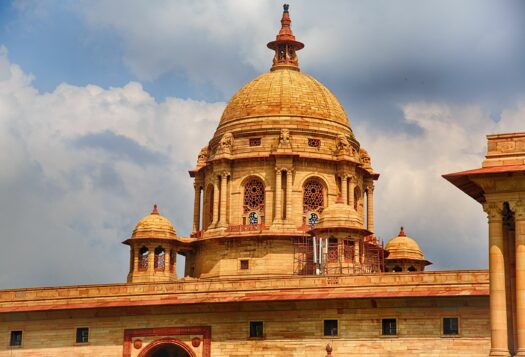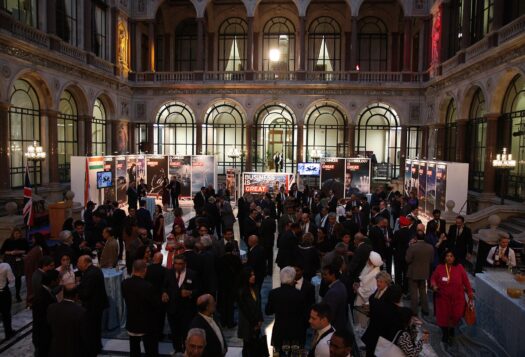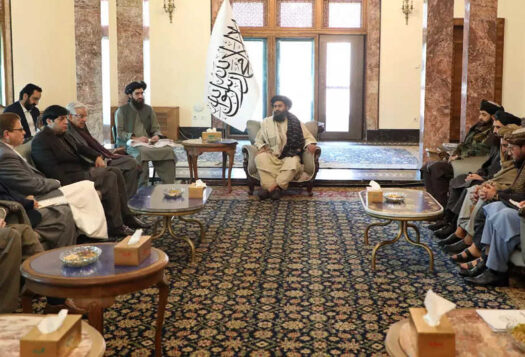
When Prime Minister Modi shook hands with his German counterpart upon receiving her at the Rashtrapati Bhavan on October 5, something else received more attention. The media were quick to notice the similar shades of blue both heads of state had donned. Twitter was abuzz with witty one-liners about the coincidence, some hailing it as the “matching colors of diplomacy”. Whether Modi knowingly matched his jacket to Merkel’s blazer or was it a mere happenstance is uncertain. What is certain though is the fact that any synergy goes beyond their clothes, and extends to areas such as trade, and energy.
Motivation Behind Deepening Ties
Over the last year, the two leaders have interacted not just at various international fora, but have also hosted each other in their home countries. Merkel’s three-day visit to New Delhi comes around six months after Modi’s visit to Germany, and the expectations were scarcely shy of “path-breaking results.” The summit-level Inter-Governmental Consultations (IGC) led to Merkel sanctioning $2.25 billion for development of solar energy and green energy corridors in India, India announced a mechanism to fast-track German investments, and the two leaders inked 18 MoUs for cooperation in various fields including education, civil aviation, defense, railways, and food safety. While there is historical precedent, the nature and scale that bilateral ties have now reached is record breaking. The underlying factor that has compelled this change is a shift in each nation’s foreign policy.
India and Germany are in a phase of transition as far as foreign policy is concerned. Both Merkel and Modi want to position their respective countries as global leaders. India has never had a more pronounced international presence than it does now. Contrary to the non-alignment tone adopted by previous governments, Modi is forging strategic partnerships. This is certainly a more pragmatic and rewarding approach. Europe, particularly Germany, sees Narendra Modi as a leader who can deliver. Meanwhile, Germany under Chancellor Merkel has begun to exercise de-facto leadership in Europe, occasionally even stepping out of the European encirclement to establish itself in a world of multiple powers. Germany is looking east, and India clearly falls in that line of sight.
Areas of Cooperation
Trade
Germany’s confidence in Modi has set the tone for economic engagements between the two countries. India has risen to ninth on UNCTAD’s ranking of investment attractiveness and gone up 16 notches to 55 on World Economic Forum’s list of most competitive economies. In his speech at the NASSCOM business forum held in Bengaluru, Prime Minister Modi said: “At a time of global slowdown, India represents a bright spot for investments.” Germany has been quick to exploit that bright spot. As a result, bilateral trade between the two nations stands close to $20 billion. In fact, Germany is India’s largest trading partner in the European Union, and the seventh largest foreign investor in India. The exchange of goods and services between the two nations was $18.11 billion last year. To India’s advantage, Germany is committed to reviving negotiations for the long-pending India-EU Free Trade Agreement – a mechanism to strengthen bilateral trade and investment, on which talks began in 2007. Indo-German collaborations and joint ventures have invested about $11.01 billion and created roughly 400,000 jobs in the Indian market. But what makes these ties even more special is the complementarity—Germany offers India the vocational education expertise that has turned it into an engineering giant, while India is replete with a skilled workforce that Germany lacks, due to its shrinking and ageing population. This solves Germany’s manpower problem, and reinforces Modi’s Make in India campaign.
Energy
Many eyes are set on the performance of the Modi government in moving the economy forward, and how he positions India in global climate talks. What remains to be seen is whether India can replace China as the preeminent economic power in South Asia, and be just as promising. Intriguing as this sounds, the realization of this scenario would undoubtedly also have an impact on energy consumption, and by extension, on carbon emission. India has been reluctant to curb its carbon emissions, and instead has called upon industrialized countries to take on larger cuts. However, being the world’s third largest emitter of greenhouse gases, India has pledged to generate 40 percent of its electricity from renewable sources within 15 years; this is part of its action plan for the upcoming climate talks in Paris. India needs at least $2.5 trillion (at 2014-15 prices) in order to fund climate change actions up to 2030, and Germany can help. Angela Merkel was well aware of this when, in her speech in the IGC, she said: “Energy cooperation is very much in the foreground, particularly exploring and developing rural areas is very much on our agenda.” She then pledged to provide India more than $2.25 billion for developing a clean energy corridor and solar projects. The India-Germany Climate and Renewable Alliance is an initiative to jointly fight climate change by enhancing research cooperation in clean and renewable technology, and making such technology easily accessible. Energy efficiency cooperation will help India develop as a sustainable economy. This is particularly important following India’s commitment to Agenda 2030, the post-2015 development agenda, and the Sustainable Development Goals identified by the United Nations in September last month.
Conclusion
The Indo-German partnership comes at a time when Narendra Modi’s every move is closely being scrutinized by critics and admirers alike. On the other hand, Merkel also finds herself fighting on both domestic and regional fronts, having declared that “If Europe fails in this refugee crisis, it betrays its founding principles.” While the partnership on these fronts looks most promising, it remains to be seen what turn the tide takes. Certainly there is more both countries can work together on, and stand to benefit. The second article in this two-part series will address those areas.
***
Image: Tobias Schwarz-AFP, Getty


